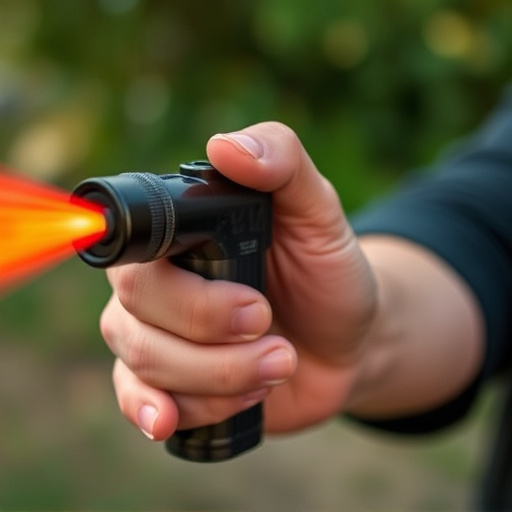Tactical pepper spray, a powerful defense tool, offers various deployment methods for diverse needs. From standard aerosol cans to ballistic launchers and remote-activated devices, options cater to user preferences and scenarios. Handheld devices excel in close-quarters combat, while mounted dispensers provide quick access during high-risk situations like crowd control or active shooter events. Effective use requires training on dispenser operation, aiming, safety protocols, de-escalation techniques, and legal awareness to ensure responsible deployment in critical moments.
“Uncover the power of tactical grade pepper spray dispensers, a versatile tool for personal safety and law enforcement tactics. This comprehensive guide explores the strategic deployment methods of this potent self-defense mechanism. We compare handheld and mounted dispenser advantages, offering insights into effective use cases. From understanding the spray’s impact to safety training considerations, this article equips readers with knowledge on tactical pepper spray deployment methods, ensuring informed decisions in high-pressure situations.”
- Understanding Tactical Pepper Spray and Its Applications
- Exploring Deployment Methods: Handheld vs. Mounted Dispensers
- Training and Safety Considerations for Effective Pepper Spray Use
Understanding Tactical Pepper Spray and Its Applications
Tactical pepper spray is a powerful tool designed for law enforcement, military, and personal defense purposes. It utilizes capsaicin, the active ingredient found in chili peppers, to temporarily disable or deter aggressors by causing severe irritation to eyes, skin, and respiratory tracts. The deployment methods of tactical pepper spray are varied, catering to different scenarios and user preferences. These include aerosol cans, ballistic launchers, and even advanced electronic devices that emit a digital spray pattern for enhanced accuracy.
Aerosol canisters remain the most common form, offering quick discharge and wide coverage. Ballistic launchers, on the other hand, provide longer range and more controlled deployment, making them ideal for tactical situations requiring precision. Electronic pepper spray devices leverage modern technology to offer features like remote activation and customizable settings, ensuring users have a precise and effective defense option in high-stress environments.
Exploring Deployment Methods: Handheld vs. Mounted Dispensers
When it comes to tactical pepper spray deployment methods, choosing between handheld and mounted dispensers depends on specific needs. Handheld devices offer versatility, allowing users to carry and deploy the spray easily during close-quarters combat or when navigating tight spaces. These are ideal for law enforcement officers, security personnel, and individuals who require a swift, mobile response option.
On the other hand, mounted dispensers are strategically placed on equipment, vehicles, or uniforms, providing quick access in high-risk scenarios like crowd control or active shooter situations. They ensure the spray is readily available without the need for manual operation, enhancing effectiveness during critical moments. This method is particularly advantageous for tactical teams and military operations where speed and precision are paramount.
Training and Safety Considerations for Effective Pepper Spray Use
Training is a paramount aspect of ensuring effective and safe tactical pepper spray deployment. Users must be educated on the dispenser’s functionality, including how to activate and aim it accurately. Practical exercises, such as target practice and simulation scenarios, allow individuals to familiarize themselves with the spray’s range, effectiveness, and potential side effects. This preparation is crucial in real-world situations where split-second decisions matter.
Safety considerations are equally vital. Pepper spray can cause temporary blindness, respiratory distress, and extreme discomfort, so users should be trained to employ it responsibly and only when necessary. Understanding de-escalation techniques and the legal implications of pepper spray use is essential for minimizing harm to both suspects and officers. Regular refreshers and updates on deployment methods further enhance safety and ensure that individuals are equipped to handle any unforeseen challenges.
Tactical pepper spray deployment methods, whether handheld or mounted, offer crucial self-defense capabilities in various scenarios. By understanding the applications and safety considerations outlined in this article, individuals can make informed choices to enhance their personal or professional safety. Proper training ensures effective use, minimizing risks while maximizing the impact of tactical pepper spray as a reliable defense mechanism.
